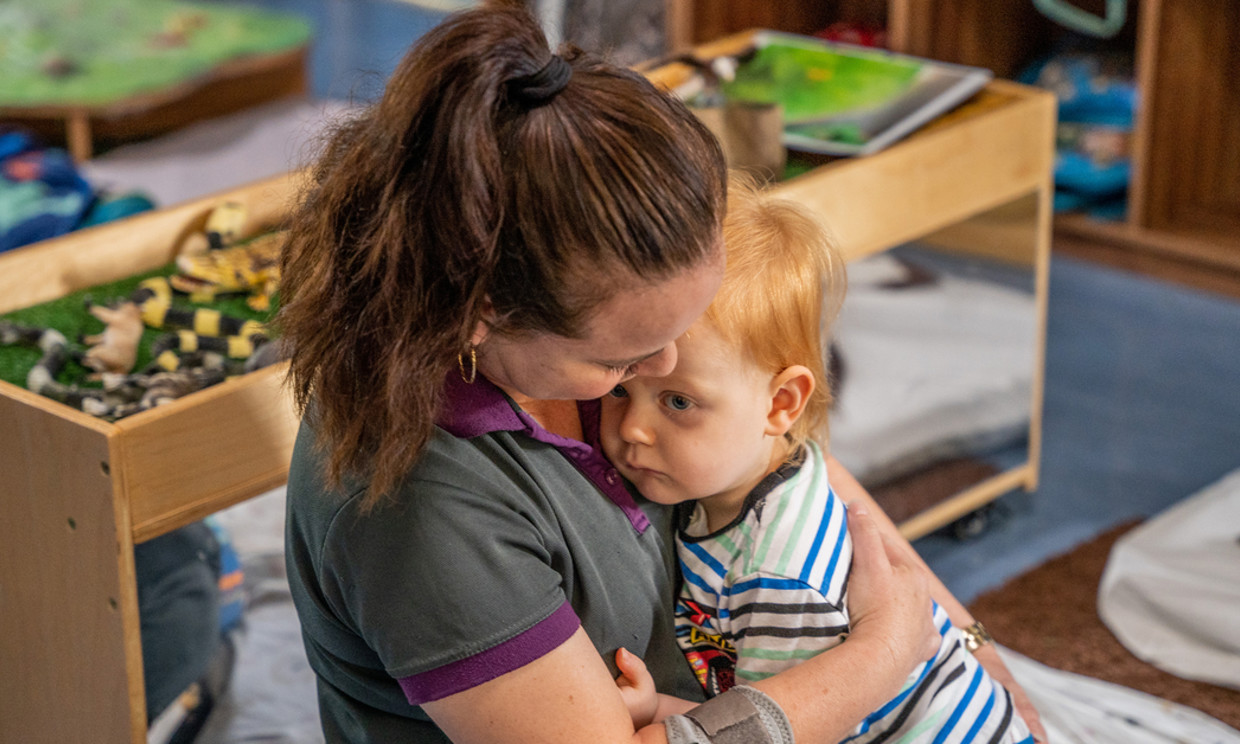Little children use behaviours like crying or running away to communicate with the bigger people in their lives. Michelle Niehuus, Goodstart Child & Family Practitioner, offers three top tips to help adults understand children’s behaviours.
Behaviour is all about communication, and it's our job as adults to learn what children are trying to tell us through their behaviours.
Thinking of children’s behaviours as a form of communication helps us to create environments where children feel safe, understood, secure and supported. And we know that in those environments, children learn to interact with others with care, empathy and respect, skills that prepare them for school and life.
Here’s three top tips for understanding children’s behaviours.
1. Let go of the past!
Many of us were brought up in a time when parents would say ‘don’t cry’ or ‘you’re okay’, or ‘they’re just being silly’, and they would dismiss our emotions. So, it can be hard for us to interact with our children differently when that’s what we’ve been taught.
We need to understand that crying and other behaviours are children’s ways of communicating with us and asking us for help.
For example, drop off and pick up at childcare can be hard for children, especially when they first start. When you leave your child instead of saying ‘you’re ok’ try saying, ‘I understand you’re sad.’
2. Support your child to build relationships
As humans, we are hardwired to be in relationships with others - children are trying to build relationships with others in their lives, but they may not know the best way to communicate or negotiate.
Some of the behaviours you might see when a child is having difficulty communicating include:
- Crying and yelling
- Hitting, kicking, pushing
- Throwing or breaking things
- Running away
- Blank face – no connection/expression
- Silent sobbing – deep quick breaths
When you see these behaviours, your child is not attention seeking - they are connection seeking. They are telling you they need you, but they don’t have the skills to communicate so they act out instead. It’s our job to decode their behaviours and emotions and support children to develop skills and strategies they need to self-regulate.
Try taking a moment to consider what’s happening in their environment, what they might have experienced that day, or what they might be asking for. For example, could your child be hungry, tired, or anxious? Could they be sad to leave their friends at the end of the day? In these moments, approach your child calmly and help guide them through explaining to you how they’re feeling.
3. Support positive behaviours
The environments we create at home and in early learning centres are crucial to driving positive behaviours in children. As adults, we can do this by:
- Creating calm, structured, and predictable environments
- Building a responsive and reciprocal warm relationship with your child
- Developing strategies to assist in hard times - it is important to let children have a say, and let them have choices.
As always, if you need support in understanding your child’s behaviours and what they’re trying to tell you, reach out to their Educators and Teachers who will be able to use their expertise to help you navigate these moments.
Michelle Niehuus is a Child & Family Practitioner at Goodstart Early Learning, where she develops an integrated and holistic approach to working with and supporting the care and education of children in partnership with Centre Directors and Educators. She holds an Associate Diploma in Children’s Services; Diploma of Training and Assessment; Diploma of Counselling; and a Graduate Diploma in Family Therapy and Systemic Practice.


